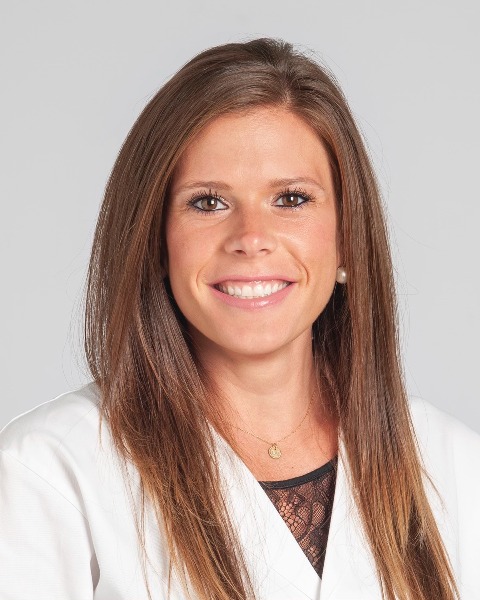Back
Poster, Podium & Video Sessions
Video
V06: Female Voiding Dysfunction/Pelvic Floor Disorders/Incontinence/Neuro-Urology
V06-05: Office Removal of Sacral Neuromodulation- Well Tolerated, Safe and Effective
Saturday, May 14, 2022
4:10 PM – 4:20 PM
Location: Video Abstracts Theater
Sarah Martin*, Cleveland Heights, OH, Jacqueline Zillioux, Lauren Gleich, Howard Goldman, Cleveland, OH

Sarah Martin, MD
Cleveland Clinic
Video Presenter(s)
Introduction: Sacral neuromodulation (SNM) is successfully used for multiple indications. In some instances a trial lead or complete device needs to be removed. Traditionally, permanent lead and/or implantable pulse generator (IPG) removals are done in the operating room under sedation and local anesthesia. Increased age, obesity, frailty, airway, and cardiac disease have been linked to increased anesthetic complications in ambulatory surgery. Over the past 4 years, we have successfully removed 30 SNM devices in the office with pure local anesthesia up to 12 years after implantation; approximately half of these were lead removals after a failed stage I and the other half were SNM leads with IPGs removed for either decreased efficacy, need for MRI, pain or erosion after initial successful stage I and II. Our objective is to present our technique for office-based SNM removal.
Methods: We review our technique of SNM lead and IPG removal in the office using only local anesthesia.
Results: The patient is placed prone on the office table and the gluteal area prepped and draped in sterile fashion. Our mayo stand consists of a 15 blade, retractors, needle driver, Metzenbaum scissors, suture scissors, Adson pickups, curved hemostat, 4x4s, sterile water irrigation, a 2-0 and 4-0 Vicryl. Local anesthetic of 0.25% Marcaine and 2% Lidocaine plain is injected superficially and deep over the incisional site. If an IPG is being removed, anesthetic is injected down to the IPG to fill the capsule and aid in dissection. Local anesthetic is also infiltrated at the medial site where the lead was initially placed in case lead removal is difficult and this site needs to be opened. Using a 15 blade and Metzenbaum scissors, the dermal layers are sequentially opened until the lead connection or battery is identified. Either the extension wire or lead attached to the IPG is cut. With gentle traction on the tined lead, you can see the skin dimpling over its medial insertion site. This site is marked in case a medial incision is needed for lead removal. If we detect extensive stretching or tension on the lead, we make a medial incision for removal. We have been able to remove leads from the lateral incision up to 6.5 years after implantation. The incision is irrigated with sterile water. Deep tissue is closed with a 2-0 Vicryl and skin is closed with a 4-0 Vicryl. Steri-Strips and a Tegaderm are used for dressing.
Conclusions: We have demonstrated our technique for removing SNM in the office using local anesthesia. All leads were removed completely intact, no additional pain medication was required and there were no complications.
Source of Funding: None
Methods: We review our technique of SNM lead and IPG removal in the office using only local anesthesia.
Results: The patient is placed prone on the office table and the gluteal area prepped and draped in sterile fashion. Our mayo stand consists of a 15 blade, retractors, needle driver, Metzenbaum scissors, suture scissors, Adson pickups, curved hemostat, 4x4s, sterile water irrigation, a 2-0 and 4-0 Vicryl. Local anesthetic of 0.25% Marcaine and 2% Lidocaine plain is injected superficially and deep over the incisional site. If an IPG is being removed, anesthetic is injected down to the IPG to fill the capsule and aid in dissection. Local anesthetic is also infiltrated at the medial site where the lead was initially placed in case lead removal is difficult and this site needs to be opened. Using a 15 blade and Metzenbaum scissors, the dermal layers are sequentially opened until the lead connection or battery is identified. Either the extension wire or lead attached to the IPG is cut. With gentle traction on the tined lead, you can see the skin dimpling over its medial insertion site. This site is marked in case a medial incision is needed for lead removal. If we detect extensive stretching or tension on the lead, we make a medial incision for removal. We have been able to remove leads from the lateral incision up to 6.5 years after implantation. The incision is irrigated with sterile water. Deep tissue is closed with a 2-0 Vicryl and skin is closed with a 4-0 Vicryl. Steri-Strips and a Tegaderm are used for dressing.
Conclusions: We have demonstrated our technique for removing SNM in the office using local anesthesia. All leads were removed completely intact, no additional pain medication was required and there were no complications.
Source of Funding: None

.jpg)
.jpg)